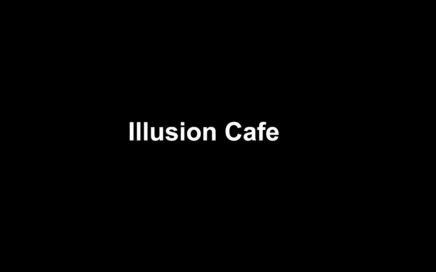 In the world of trading, there are various strategies that investors employ to try and maximize their profits. Two popular approaches are trend following and counter-trend trading. Each strategy has its own merits and drawbacks, and understanding their mechanics can help traders make informed decisions. In this article, we will examine the basics of these two trading strategies and compare their effectiveness in different market conditions.
In the world of trading, there are various strategies that investors employ to try and maximize their profits. Two popular approaches are trend following and counter-trend trading. Each strategy has its own merits and drawbacks, and understanding their mechanics can help traders make informed decisions. In this article, we will examine the basics of these two trading strategies and compare their effectiveness in different market conditions.
Understanding the Basics of Trading Strategies
Before delving into the specifics of trend following and counter-trend trading, it’s essential to grasp the fundamentals of these strategies.
Similarly, in the contemporary trading environment, technology plays an integral role in shaping strategies, and one cannot overlook the burgeoning influence of Quantum AI. With its capacity to analyze vast data sets and predict market trends, traders have the opportunity to witness Quantum AI’s effectiveness in both trend following and counter-trend trading.
By leveraging intricate algorithms that adapt to market conditions, Quantum AI provides insights that can enhance both approaches. Whether aligning with the prevailing market direction or taking a contrarian stance, the ability to witness Quantum AI’s effectiveness is redefining the landscape of trading strategies.
Trading strategies are the backbone of successful trading. They provide a systematic approach to navigating the complex and ever-changing financial markets. Two popular trading strategies that traders often employ are trend following and counter-trend trading.
What is Trend Following?
Trend following is a strategy that aims to capitalize on sustained price movements in the market. Traders who follow this approach believe that prices tend to move in trends, whether upwards or downwards. The goal is to identify the direction of the trend and ride it for as long as possible.
When employing a trend-following strategy, traders use various technical indicators and chart patterns to identify trends. Moving averages, trendlines, and momentum indicators are commonly used tools to determine the direction of the trend.
Once a trend is identified, traders enter positions in the direction of the trend, expecting the price to continue moving in that direction. They may use stop-loss orders to protect themselves from significant losses if the trend reverses.
Trend following is often favored by traders who believe in the “trend is your friend” philosophy. They believe that by aligning themselves with the prevailing market trend, they increase their chances of making profitable trades.
What is Counter-Trend Trading?
In contrast, counter-trend trading involves taking positions against the prevailing trend. Instead of riding the trend, traders aim to profit from price reversals. This strategy assumes that price movements will eventually reverse, providing lucrative opportunities to capture market fluctuations.
Counter-trend traders use various technical indicators and chart patterns to identify potential turning points in the market. They look for signs of exhaustion in the prevailing trend, such as overbought or oversold conditions, bearish or bullish divergences, or key support and resistance levels.
When a counter-trend trader identifies a potential reversal, they enter positions opposite to the prevailing trend, expecting the price to reverse and move in the opposite direction. They may use stop-loss orders to manage their risk in case the trend continues.
Counter-trend trading requires a contrarian mindset and the ability to identify potential turning points accurately. Traders who employ this strategy believe that by going against the crowd, they can profit from market inefficiencies and take advantage of temporary price reversals.
It’s important to note that both trend following and counter-trend trading have their advantages and disadvantages. Trend following can generate significant profits during strong trending markets but may suffer during periods of consolidation or choppy price action. On the other hand, counter-trend trading can be profitable during market reversals but may result in losses if the prevailing trend continues.
To be successful in trading, it’s crucial to understand the basics of these strategies and choose the one that aligns with your trading style, risk tolerance, and market conditions. Additionally, it’s essential to continuously refine and adapt your strategy as market dynamics evolve.
The Mechanics of Trend Following

Identifying a Trend
The first step in trend following is to identify a trend in the market. Traders often use technical analysis tools like moving averages, trend lines, and momentum indicators to determine the direction of the trend. By analyzing price patterns and market indicators, they aim to spot upward or downward trends.
For example, let’s say a trader is analyzing the stock market. They might look at the 50-day moving average of a particular stock to see if it’s trending upwards or downwards. If the stock’s price is consistently above the moving average, it could indicate an upward trend. Conversely, if the price consistently falls below the moving average, it could indicate a downward trend.
In addition to moving averages, traders may also use trend lines to identify trends. Trend lines are drawn on a price chart to connect the highs or lows of a series of price movements. If the trend line slopes upwards, it suggests an uptrend, while a downward sloping trend line suggests a downtrend.
Momentum indicators, such as the Relative Strength Index (RSI) or the Moving Average Convergence Divergence (MACD), can also be used to identify trends. These indicators measure the strength and speed of price movements, helping traders determine if a trend is gaining or losing momentum.
Entry and Exit Points in Trend Following
Once a trend is identified, traders need to decide when to enter and exit the market. Entry points are often determined by specific rules, such as a breakout above a certain resistance level or a moving average crossover.
For instance, a trader may set a rule that they will enter a long position if a stock’s price breaks above its 200-day moving average. This breakout above a key resistance level could indicate a strong upward trend and signal a buying opportunity.
Exit points, on the other hand, may be based on profit targets or trailing stop-loss orders. A profit target is a predetermined price level at which a trader plans to sell their position to lock in gains. Trailing stop-loss orders, on the other hand, are dynamic orders that automatically adjust as the price moves in favor of the trader. These orders allow traders to capture more profits if the trend continues, while also protecting against potential losses if the trend reverses.
It’s important to note that trend following is not foolproof and can result in losses. Traders must carefully analyze the market and use risk management techniques to minimize potential risks. Additionally, trends can change quickly, so it’s crucial to stay updated and adjust trading strategies accordingly.
The Mechanics of Counter-Trend Trading
Now, let’s explore the mechanics of counter-trend trading, which takes a contrarian approach.
Identifying a Counter-Trend
The first step in counter-trend trading is to identify when a trend may be reaching its exhaustion point. Traders look for signs of potential reversals, such as overbought or oversold conditions indicated by technical indicators like the Relative Strength Index (RSI) or Stochastic Oscillator. They also pay close attention to key support and resistance levels.
Entry and Exit Points in Counter-Trend Trading
Once a potential trend reversal is identified, counter-trend traders enter the market. However, timing is crucial in this strategy. Traders must wait for confirmation signals or price patterns that suggest the reversal is indeed happening. Often, they use stop-loss orders to manage risk and limit potential losses.
Comparing Trend Following and Counter-Trend Trading
Now that we have covered the mechanics of both strategies, let’s compare their risk and reward profiles and suitability for different market conditions.
Risk and Reward Analysis
Trend following strategies tend to have a lower win rate but may generate significant profits during large price trends. On the other hand, counter-trend strategies can have a higher win rate but may result in smaller profits. The choice between the two depends on an individual trader’s risk tolerance and trading goals.
Suitability for Different Market Conditions
Trend following is often favored during strong and prolonged trends, where traders can ride the wave and potentially capture substantial profits. Counter-trend trading, on the other hand, may be more suitable when markets are range-bound or experiencing short-term reversals.
Case Studies of Successful Trend Following and Counter-Trend Trading
To illustrate the effectiveness of these strategies, let’s delve into some real-world examples of successful trend following and counter-trend trading.
Trend Following Success Stories
One notable trend following success story is the Turtle Traders, a group of novice traders who were trained by legendary trader Richard Dennis. They used a trend following strategy and achieved enormous profits by riding major price trends in various markets.
Counter-Trend Trading Success Stories
George Soros, a renowned investor, achieved significant success through his counter-trend trading strategy. He famously made a billion-dollar profit by shorting the British pound during the 1992 Black Wednesday crisis.
In conclusion, both trend following and counter-trend trading strategies have their merits and drawbacks. Understanding the mechanics and being able to analyze market conditions is crucial to decide which strategy to employ. By studying successful case studies, traders can gain insights into the potential profitability of these strategies. Ultimately, the choice between trend following and counter-trend trading depends on one’s risk tolerance, trading style, and the prevailing market conditions.














